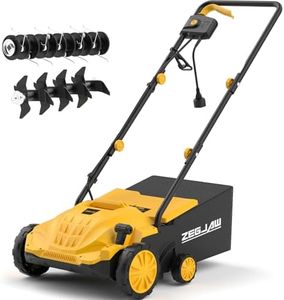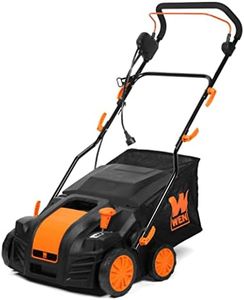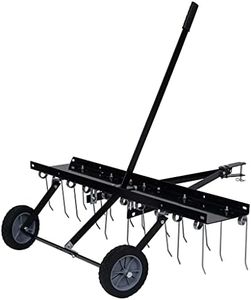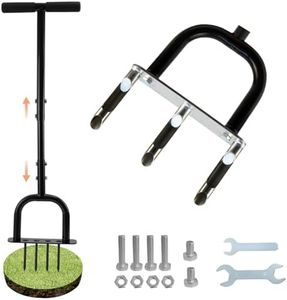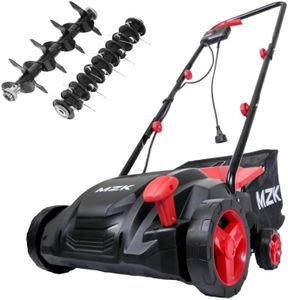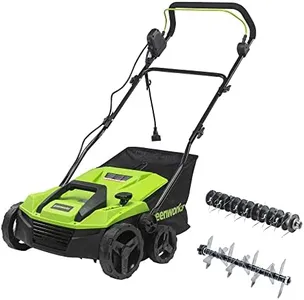We Use CookiesWe use cookies to enhance the security, performance,
functionality and for analytical and promotional activities. By continuing to browse this site you
are agreeing to our privacy policy
10 Best Lawn Scarifier
From leading brands and best sellers available on the web.Buying Guide for the Best Lawn Scarifier
Choosing a lawn scarifier, also known as a dethatcher, can make a big difference in keeping your lawn healthy and lush. Before buying, it's important to think about your lawn size, the amount of moss or thatch present, and how comfortable you are with equipment maintenance. Understanding the main features of a lawn scarifier will help you make an informed choice and end up with a tool that fits your garden’s needs and your personal preferences.Power SourceThe power source refers to whether the lawn scarifier is electric, petrol, or sometimes manual. Electric scarifiers are plug-in or battery powered, making them lighter, quieter, and easier to maintain, but they generally suit smaller to medium lawns due to cable reach or battery life limits. Petrol scarifiers are more powerful, making them ideal for larger areas or tougher tasks, but they're usually heavier and noisier, and require more maintenance. Manual models use your own energy—they’re quieter and more environmentally friendly but only practical for very small areas. When choosing, consider your lawn size, how often you'll use the scarifier, and how much effort you're willing to put in.
Working WidthWorking width means how wide a strip the scarifier can cover in one pass. Wider working widths allow you to cover the lawn more quickly, which is handy if you have a large area to maintain, but they can be heavier and harder to maneuver in tight spaces. Narrower working widths are more nimble, making them great for smaller or awkwardly-shaped lawns. To pick the right width, match it to the size and shape of your lawn—big open spaces benefit from wide paths, while tighter or more delicate areas need narrower machines.
Depth SettingsDepth settings let you adjust how deeply the blades or tines cut into the soil and thatch. More depth options mean you can tailor the tool for different grass conditions—shallow for light thinning, deeper for thicker moss or thatch removal, or for soil aeration. If you have a lawn with varied needs or plan on scarifying multiple times a year, more adjustment options give you versatility. Think about the kind of work your lawn requires and choose a machine with enough depth settings to cover those needs.
Blade or Tine TypeScarifiers use either blades or spring tines to remove moss and thatch. Blades cut into the soil and do a stronger job at removing deep-rooted debris, also helping with aeration, while spring tines are more gentle, working well for lighter dethatching jobs or for delicate lawns. If your lawn suffers from heavy thatch or compacted soil, look for strong, blade-based machines. For gentle maintenance or fine lawns, tines might be more appropriate.
Collector CapacityCollector capacity refers to the size of the onboard box or bag that collects the debris pulled up by scarifying. Bigger collectors reduce the number of times you have to stop and empty the machine, which is convenient for larger lawns. Smaller collectors mean lighter weight and are fine for short sessions or smaller areas. Consider how much waste you expect your lawn to create and how long you want to work before emptying the collector.
Weight and ManeuverabilityWeight and maneuverability affect how easy the scarifier is to push and turn. Lighter models are easier to move and better for smaller, contoured lawns, while heavier ones may be more stable and suitable for tackling tough, uneven ground. Think about your own strength, your lawn’s terrain, and whether you need to transport or store the machine easily.


